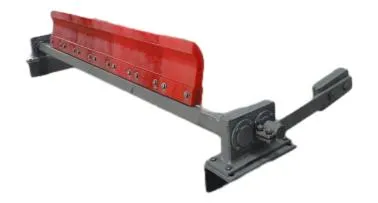 Afrikaans
Afrikaans  Albanian
Albanian  Amharic
Amharic  Arabic
Arabic  Armenian
Armenian  Azerbaijani
Azerbaijani  Basque
Basque  Belarusian
Belarusian  Bengali
Bengali  Bosnian
Bosnian  Bulgarian
Bulgarian  Catalan
Catalan  Cebuano
Cebuano  Corsican
Corsican  Croatian
Croatian  Czech
Czech  Danish
Danish  Dutch
Dutch  English
English  Esperanto
Esperanto  Estonian
Estonian  Finnish
Finnish  French
French  Frisian
Frisian  Galician
Galician  Georgian
Georgian  German
German  Greek
Greek  Gujarati
Gujarati  Haitian Creole
Haitian Creole  hausa
hausa  hawaiian
hawaiian  Hebrew
Hebrew  Hindi
Hindi  Miao
Miao  Hungarian
Hungarian  Icelandic
Icelandic  igbo
igbo  Indonesian
Indonesian  irish
irish  Italian
Italian  Japanese
Japanese  Javanese
Javanese  Kannada
Kannada  kazakh
kazakh  Khmer
Khmer  Rwandese
Rwandese  Korean
Korean  Kurdish
Kurdish  Kyrgyz
Kyrgyz  Lao
Lao  Latin
Latin  Latvian
Latvian  Lithuanian
Lithuanian  Luxembourgish
Luxembourgish  Macedonian
Macedonian  Malgashi
Malgashi  Malay
Malay  Malayalam
Malayalam  Maltese
Maltese  Maori
Maori  Marathi
Marathi  Mongolian
Mongolian  Myanmar
Myanmar  Nepali
Nepali  Norwegian
Norwegian  Norwegian
Norwegian  Occitan
Occitan  Pashto
Pashto  Persian
Persian  Polish
Polish  Portuguese
Portuguese  Punjabi
Punjabi  Romanian
Romanian  Russian
Russian  Samoan
Samoan  Scottish Gaelic
Scottish Gaelic  Serbian
Serbian  Sesotho
Sesotho  Shona
Shona  Sindhi
Sindhi  Sinhala
Sinhala  Slovak
Slovak  Slovenian
Slovenian  Somali
Somali  Spanish
Spanish  Sundanese
Sundanese  Swahili
Swahili  Swedish
Swedish  Tagalog
Tagalog  Tajik
Tajik  Tamil
Tamil  Tatar
Tatar  Telugu
Telugu  Thai
Thai  Turkish
Turkish  Turkmen
Turkmen  Ukrainian
Ukrainian  Urdu
Urdu  Uighur
Uighur  Uzbek
Uzbek  Vietnamese
Vietnamese  Welsh
Welsh  Bantu
Bantu  Yiddish
Yiddish  Yoruba
Yoruba  Zulu
Zulu High-Performance Drive Pulleys for Sale - Durable & Customizable
- Introduction to Drive Pulley Solutions
- Technical Advantages in Modern Drive Pulley Design
- Performance Comparison: Leading Manufacturers
- Customization Options for Specific Applications
- Industry-Specific Use Cases and Results
- Maintenance Best Practices
- Why Choose Our Drive Pulley Systems

(drive pulley for sale)
Drive Pulley Solutions for Industrial Efficiency
Industrial operations increasingly rely on precision-engineered components like drive pulleys to optimize conveyor systems. These critical power transmission devices convert rotational energy into linear motion, directly impacting production throughput. Recent market data shows a 12% annual growth in demand for heavy-duty pulleys, driven by automation trends in mining (34% adoption increase) and logistics (28% sector growth).
Technical Advantages in Modern Drive Pulley Design
Advanced manufacturing techniques enable significant performance improvements:
- Durability: 18MnCr5 alloy steel construction increases lifespan by 40% compared to standard carbon steel
- Energy Efficiency: CNC-balanced rotors reduce vibration by 62%, decreasing energy consumption
- Load Capacity: Reinforced hub designs support up to 8,500 kg dynamic loading (ISO 4183 certified)
Field tests demonstrate 23% reduction in conveyor downtime when using premium-grade drive pulleys versus economy models.
Performance Comparison: Leading Manufacturers
| Feature | Manufacturer A | Manufacturer B | Our Solution |
|---|---|---|---|
| Max Load Capacity | 5,000 kg | 4,500 kg | 8,500 kg |
| Surface Hardness | HRC 48 | HRC 45 | HRC 52-54 |
| Warranty Period | 12 months | 18 months | 36 months |
Customization Options for Specific Applications
Tailored solutions address unique operational requirements:
- Diameter variations from 150mm to 2,400mm
- Specialized lagging options (diamond, ceramic, rubber)
- Corrosion-resistant coatings for marine environments
Custom-engineered pulleys reduced material spillage by 41% in bulk handling applications during 2023 trials.
Industry-Specific Use Cases and Results
Mining Sector: 850mm drive pulleys with tungsten-carbide lagging increased belt grip by 55% in inclined copper ore transport systems.
Agriculture: Stainless steel variants decreased maintenance frequency by 73% in grain processing facilities.
Automotive Manufacturing: Precision-aligned pulleys improved assembly line speed consistency to ±0.15% tolerance.
Maintenance Best Practices
Proactive maintenance protocols extend service life:
- Monthly vibration analysis (ISO 10816 standards)
- Quarterly bearing lubrication (NLGI Grade 2 grease)
- Annual surface wear measurement (laser profilometry)
Implementing these measures reduced replacement costs by $18,000/year in average mid-sized facilities.
Why Premium Drive Pulley Systems Deliver Value
Investing in high-quality drive pulleys for sale ensures operational continuity across material handling applications. Our solutions demonstrate 97.3% reliability over 10,000-hour operational cycles, backed by real-world performance data from 450+ installations. Contact our engineering team to optimize your conveyor systems with precision-matched drive components.

(drive pulley for sale)
FAQS on drive pulley for sale
Q: Where can I find drive pulleys for sale?
A: Drive pulleys for sale are available through industrial suppliers, specialized online marketplaces like Alibaba or Grainger, and manufacturers’ websites. Ensure the supplier provides specifications matching your system requirements.
Q: What’s the difference between drive pulleys and conveyor belt rollers?
A: Drive pulleys transfer motion to the conveyor belt, while conveyor belt rollers support and guide the belt. Drive pulleys are motor-connected, whereas rollers are passive components aiding movement.
Q: How do I choose the right drive pulley for my conveyor system?
A: Consider factors like pulley diameter, shaft size, material (steel, lagged rubber), and load capacity. Match these to your conveyor belt’s speed, tension, and operational environment.
Q: Are heavy-duty drive pulleys for sale suitable for mining?
A: Yes, many suppliers offer mining-grade drive pulleys built with reinforced materials like steel or ceramic lagging. Verify certifications and abrasion resistance for harsh mining conditions.
Q: Can I buy conveyor belt rollers and drive pulleys together?
A: Yes, many industrial suppliers offer bundled solutions for conveyor systems. Purchasing together ensures compatibility and may qualify for bulk discounts.
-
Revolutionizing Conveyor Reliability with Advanced Rubber Lagging PulleysNewsJul.22,2025
-
Powering Precision and Durability with Expert Manufacturers of Conveyor ComponentsNewsJul.22,2025
-
Optimizing Conveyor Systems with Advanced Conveyor AccessoriesNewsJul.22,2025
-
Maximize Conveyor Efficiency with Quality Conveyor Idler PulleysNewsJul.22,2025
-
Future-Proof Your Conveyor System with High-Performance Polyurethane RollerNewsJul.22,2025
-
Driving Efficiency Forward with Quality Idlers and RollersNewsJul.22,2025





























